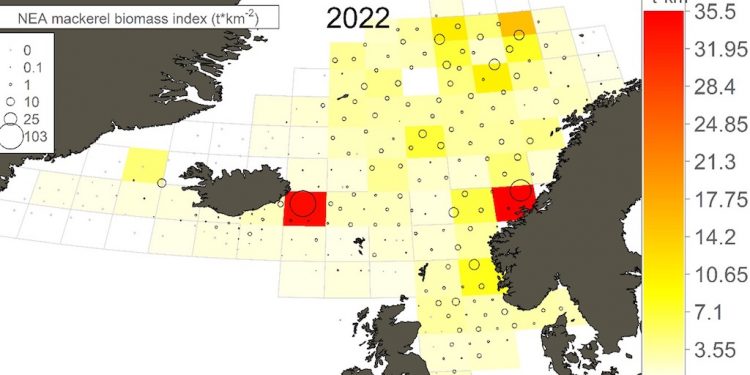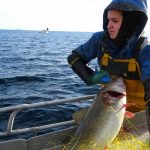The annual international survey to identify the extent of North Atlantic pelagic stocks took place between 1st July and 3rd August this year, and the results have now been analysed and made public.
The survey uses research vessels from the Faroe Islands, Norway, Iceland, Greenland and Denmark, and this year covered a 2.9 million square kilometre area which this year has been expanded by 32% compared to the 2021 survey by extending it further into Greenlandic waters and south of Iceland.
The biomass of mackerel is estimated at 7.37 million tonnes – 43% higher than the figures for 2021 – based on 247 pre-decided surface tow stations, two of which returned exceptionally high catch rates.
The distribution of mackerel was shown to be considerably stronger in Icelandic waters than over the previous two years, with 18.9% of the stock estimated to be present in the Icelandic EEZ, compared to just 7.7% last year.
As in previous years, the bulk of the stock was found to be in the Norwegian Sea, but with less than previously found in northern waters.
The survey also carried out acoustic surveys to determine the extent of stocks of Atlanto-Scandian herring and blue whiting, and these results will be made public on 30th September, as analysis of the results is not yet complete.
The results of this survey will be used for ICES to formulate its advice for 2023 fisheries for mackerel, Atlanto-Scandian herring and blue whiting.









